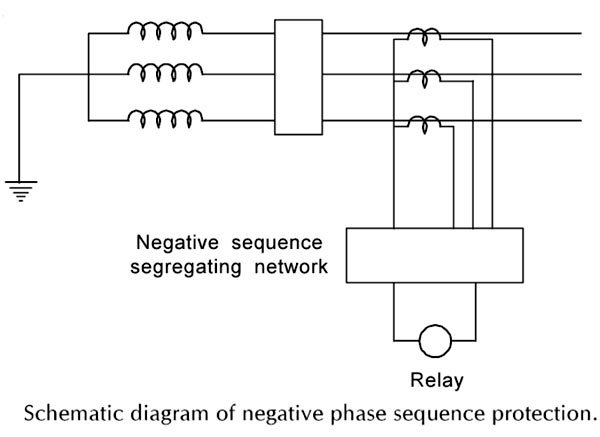For which of the following protection from negative sequence currents is provided?
Right Answer is:
Generators
SOLUTION
Negative Sequence Overcurrent Relay
Negative sequence overcurrent relays are used to detect the unbalanced load on a generator which may cause excessive rotor heating. The relay is also used to detect unbalanced load currents in motors.
The stator windings may have to carry unbalanced currents due to (i) unbalanced load current, and (ii) due to the unsymmetrical fault. Whatever may be the reason, these unbalanced stator currents will have a negative sequence component, the magnitude of which depends on the degree of unbalance. The negative sequence currents in the stator windings will produce a magnetic field that rotates at synchronous speed but in an opposite sense to the dc field system. The relative speed between the negative sequence flux and the rotor, therefore, is twice the synchronous speed. As a result, double frequency voltage and current will be induced in the rotor body and the field winding. These currents produce severe rotor heating. Modern synchronous machines have a limited negative phase sequence current capability. In other words, there is a limit to the degree of unbalanced current that an alternator can withstand without suffering serious rotor overheating.
A negative phase sequence (NPS) relay is provided to an alternator to disconnect the machine before a dangerous temperature is reached. The negative sequence current heating is proportional to the square of the current.
The negative sequence current capability of a generator is specified in terms of:
(a) The maximum continuous current that can flow without damage;
(b) The maximum value of I2t can be withstood without damage when t is small (less than 10 see). I2 is the current in p.u. and t is in seconds.
To protect against negative sequence current, the negative phase sequence relay should have:
(i) A negative sequence segregating network which will separate the negative sequence component from the other sequence components of line current;
(ii) An IDMT over-current relay fed with the negative sequence current, thus segregated.
The relay characteristic is matched with the requirement, I2t = constant. The protection system is schematically shown in Figure.

